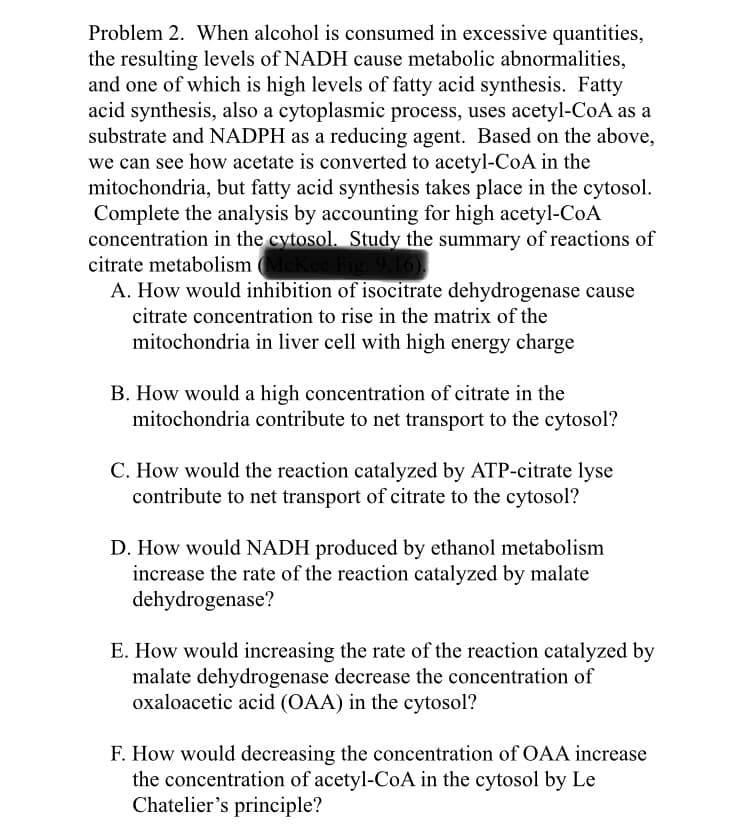Problem 2. When alcohol is consumed in excessive quantities, the resulting levels of NADH cause metabolic abnormalities, and one of which is high levels of fatty acid synthesis. Fatty acid synthesis, also a cytoplasmic process, uses acetyl-CoA as a substrate and NADPH as a reducing agent. Based on the above, we can see how acetate is çonverted to acçetyl-ÇoA in the
Problem 2. When alcohol is consumed in excessive quantities, the resulting levels of NADH cause metabolic abnormalities, and one of which is high levels of fatty acid synthesis. Fatty acid synthesis, also a cytoplasmic process, uses acetyl-CoA as a substrate and NADPH as a reducing agent. Based on the above, we can see how acetate is çonverted to acçetyl-ÇoA in the
Chapter6: Metabolism, Energy Balance, And Body Composition
Section: Chapter Questions
Problem 2CA
Related questions
Question
Need help with all of problem 2

Transcribed Image Text:Problem 2. When alcohol is consumed in excessive quantities,
the resulting levels of NADH cause metabolic abnormalities,
and one of which is high levels of fatty acid synthesis. Fatty
acid synthesis, also a cytoplasmic process, uses acetyl-CoA as a
substrate and NADPH as a reducing agent. Based on the above,
we can see how acetate is çonverted to acçetyl-ÇoA in the
Expert Solution
This question has been solved!
Explore an expertly crafted, step-by-step solution for a thorough understanding of key concepts.
This is a popular solution!
Trending now
This is a popular solution!
Step by step
Solved in 2 steps

Knowledge Booster
Learn more about
Need a deep-dive on the concept behind this application? Look no further. Learn more about this topic, biology and related others by exploring similar questions and additional content below.Recommended textbooks for you

